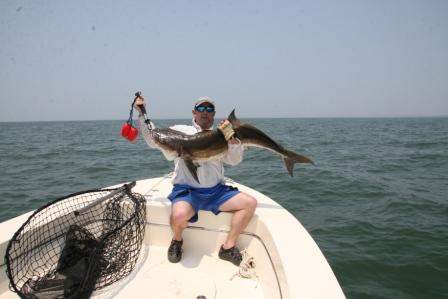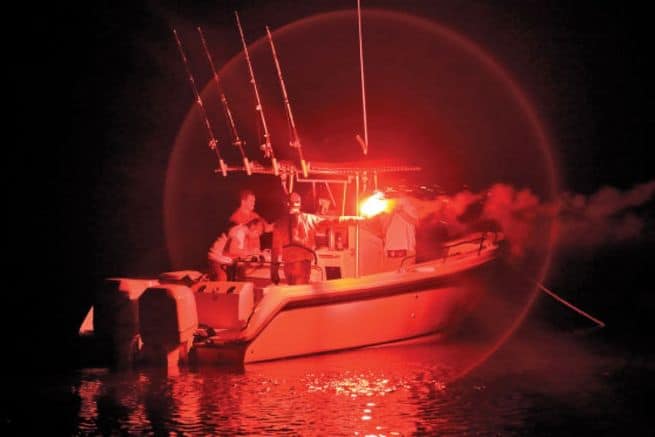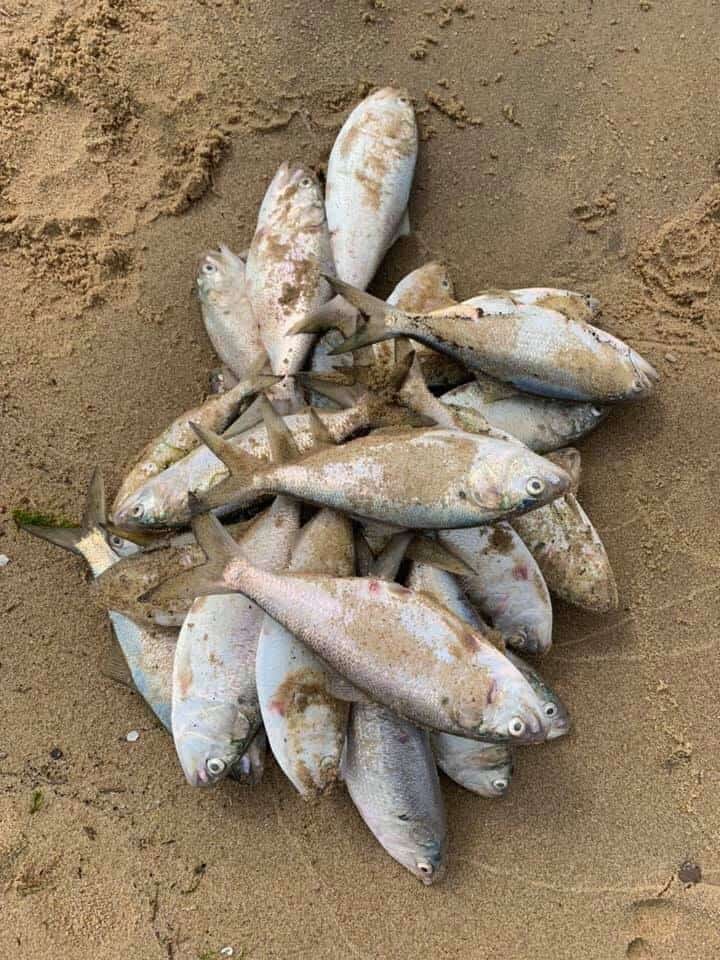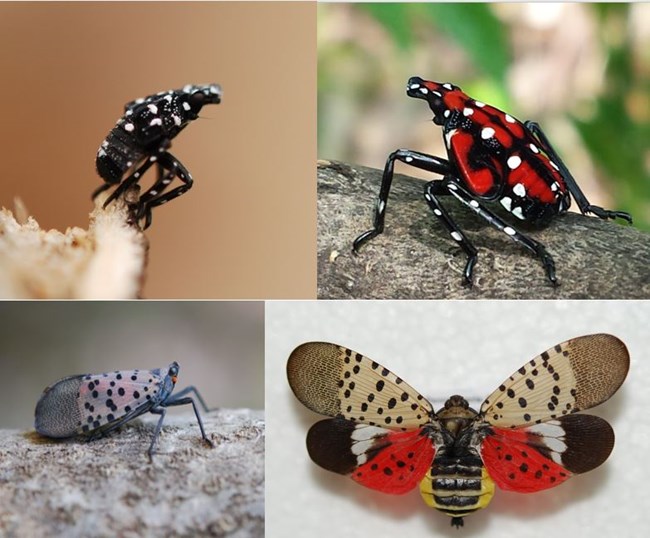Chesapeake outdoor guide Captain Chris Dollar brings up-to-date insight to the Bay Bulletin.
A major shift is coming to cobia management— from federal to state regulation.
Cobia are popular gamefish in Virginia and North Carolina waters, with growing interest in Maryland’s part of the Bay. NOAA Fisheries announced beginning March 21 the Atlantic States Marine Fisheries Commission will be responsible for managing cobia. (Photo by Capt. Chris D. Dollar/CD Outdoors)In recent years, these hard-charging gamesters have become more and more popular in Virginia and North Carolina with growing interest in Maryland’s part of the Bay. This may be linked to a possible increase in the cobia population and the fact that other gamefish numbers (striped bass, flounder, weakfish…) have dropped. It’s likely we’ll see even more sport-fishing pressure on cobia. With that comes the need to manage these excellent gamefish conservatively to ensure a healthy, stable fishery.
Last week, NOAA’s National Marine Fisheries Service announced that beginning March 21 cobia stock management will become the responsibility of the Atlantic States Marine Fisheries Commission (ASMFC) because most cobia fishing occurs in state waters (along the coast within three miles of the shore). Many anglers say they’ve enjoyed exceptional fishing in recent seasons. These anecdotal accounts, however, are somewhat at odds with NOAA’s Fisheries Service Marine Recreational Information Program (MRIP) data, which have indicated falling stock numbers. This survey is the primary source for recreational catch and effort data on a variety of federally managed species. One excellent sport angler who is dialed into cobia and fisheries management, told me MRIP’s numbers are “all over the place.” ASFMC staff biologists are conducting a new cobia stock assessment to help guide their management plan.
And now for fishing: Wild winds abated, and the sun is forecast to shine (kinda) for a couple of days, so get after some panfish and freshwater trout. The other day, a Maryland Department of Natural Resources (DNR) perch biologist told me upper Bay river water temps are very close to ideal for the yellow and white perch spring spawning runs. The upper western shore, lower Susquehanna River and Northeast rivers are your best bet. Neds (yellow perch) are holding in 25- to 50-feet of water. Blood worms or minnows on standard top-and-bottom rigs with enough weight to hold in the current are perhaps your best options. Anglers fishing shallower waters in the Magothy and Severn rivers can expect mixed results for yellow and white perch and a shot at a pickerel. Grass shrimp and live minnows work best but spinners and double-rigged droppers on a bobber also catch in shallower waters.
The best action for panfish and pickerel remains on the Eastern Shore. Delaware ponds are excellent for pike, and the bite for neds, white perch and crappie is outstanding on the Pocomoke River and to a lesser degree on the Tuckahoe, Wicomico and Nanticoke rivers. Up around Denton on the Choptank River expect a mix of yellows, whites and crappie. Recent blow-out tides made things challenging for shore anglers. The incoming tide is best. Try 1/16- or 1/8-ounce jigs such as the UV-Glo style rigged in tandem tipped with soft plastics or go with a spinner bait such as the Beetle Spin, Mepps, Perch-Pounder, or Woody’s.
This is the time for freshwater trout fishing, especially in the put-and-take management areas where state fisheries staff members release buckets-full of hatchery-raised brown and rainbow trout in community waters for anglers to catch. These hefty, hand-fed trout will put a bend in your— or better yet, a youngster’s— fishing rod.Use wax or meal worms with a split-shot under a float, or artificial bait such as Berkley Powerbait fished weightless or under a float. Or you can win by tossing ultralight spinner baits. The Maryland DNR Fisheries Service and Virginia Department of Game & Inland Fisheries both post trout-stocking updates on their Facebook and web pages.
Meanwhile, the tidal Potomac and Nanticoke rivers offer good to excellent blue catfish fishing. Freshly cut-up gizzard (mud) shad or even bluegill sunfish make good baits as does chicken liver.




